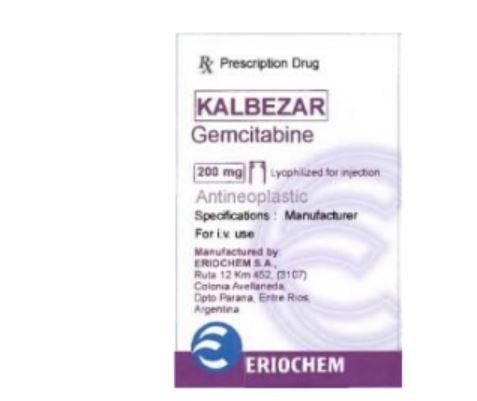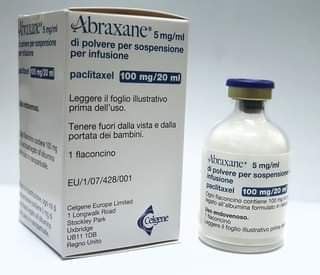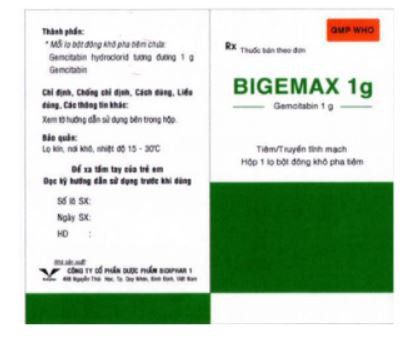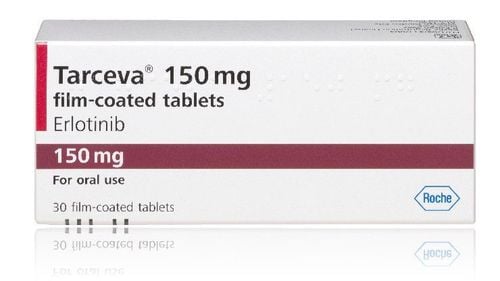This is an automatically translated article.
Post by Master, Doctor Mai Vien Phuong - Gastroenterologist - Department of Medical Examination & Internal Medicine - Vinmec Central Park International General Hospital.
Hepatopancreatic cancer has a poor prognosis and high mortality rate. To combat this malignancy, aberrant expression and signaling of the ron receptor protein in the pathogenesis as a drug target for therapeutic intervention should be investigated.
1. The role of ron and C-met receptor proteins in cancer pathogenesis
RON and c-MET are both members of the semaphorin (transmembrane receptor tyrosine kinase) family, which share similar structural and biochemical properties. The proteins exist as heteromers consisting of extracellular and transmembrane chains linked together by disulfide bonds. The extracellular sequences RON and c-MET have very similar functional domains, including SEMA, which regulates phosphorylation, receptor dimerization, and ligand binding.
RON and c-MET are activated by their respective ligands: Macrophage-stimulating protein for RON and hepatocyte growth factor-like protein for c-MET. c-MET and hepatocyte growth factor-like protein are expressed in a variety of cells and tissues.
2. Abnormal RON expression and signaling have been identified in hepatopancreatic cancer
Abnormal ron receptor protein expression and signaling has been identified in hepatopancreatic cancer, which serves as a tumor determinant for malignant behaviors. In addition, RON is being viewed as an important mediator in the clinical prognosis of hepatopancreatic cancer. Therefore, RON-targeted therapeutics can be developed for the treatment of hepatopancreatic cancer. Among them, drug-antibody conjugates are becoming increasingly popular in current research and their potential as a novel anticancer biological treatment will be identified in clinical trials in the future. future. The role of RON in cancer pathogenesis is receiving increasing attention. Hepatopancreatic cancer has a poor prognosis, higher cancer-related mortality because of high rates of recurrence, metastasis, and invasion, as well as insensitivity to chemotherapy.
3. Disrupted ron receptor protein signaling and activation may be activated during pancreatic tumorigenesis and metastasis
Primary and metastatic pancreatic tumor slides and high-grade PanIN lesions show increased RON expression. Accumulating evidence suggests that dysregulated RON activating and signaling factor can be activated during tumorigenesis and metastasis. Collectively, activation of the ron receptor protein leads to increased tumorigenesis of pancreatic cancer, chemoresistance, survival, angiogenesis, and cell invasion. Among them, invasion occurs via an epithelial-to-mesenchymal-like phenotype. One study showed that macrophage-stimulating protein treatment of pancreatic cancer cell line L3.6pl resulted in increased cell invasion, cell migration, and ERK phosphorylation. RON activation leads to decreased levels of membrane-bound E-cadherin together with nuclear translocation of β-catenin, like that from epithelial to mesenchymal. Treated L3.6pl cells acquire a spindle shape and lose polarity, their intercellular cleavage increases, and more pseudo-cells are formed.
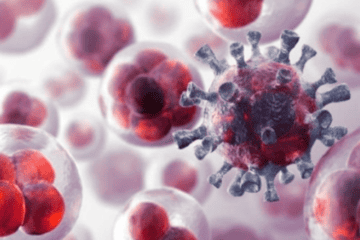
4. Activate Aberrant RON in synergy with other growth factors
Aberrant RON activation in concert with other growth factors, such as transforming growth factor-β, contributes to the phenotypic changes of pancreatic cancer cells in the epithelial-to-mesenchymal direction. In addition, an investigation of RON signaling-mediated angiogenesis in pancreatic cancer revealed that RON signaling leads to MAPK-mediated pancreatic cancer cell production of angiogenic proteins. Well characterized, vascular endothelial growth factor. RON activation also induces microtubule formation. Finally, the RON signaling pathway also plays a part in chemoresistance, which is associated with enhanced viability. Short-chain RNA (shRNA) restricts RON expression in hepatopancreatic cancers, leading to increased susceptibility to gemcitabine therapy and susceptibility to apoptosis. From the above findings, it is clear that RON signaling is important for hepatopancreatic cancer formation and metastasis.5. Ron receptor as treatment target for hepatopancreatic cancer
Based on the pathogenic role of RON in cancers, including hepatocellular carcinoma, efforts have mainly focused on establishing RON as a drug target for therapeutic intervention. A variety of techniques have been proposed to effectively suppress RON signaling and expression. One approach is to inhibit RON expression using gene silencing with small interfering RNAs (siRNAs). In pancreatic cancer cases, silencing of RON induces growth inhibition by enhancing their susceptibility to apoptosis and through sensitization to gemcitabine therapy. Therefore, delivery of RON-specific siRNAs may have therapeutic potential. In addition, small molecule kinase inhibitors (SMKIs), which block the tyrosine kinase domain of the receptor through noncompetitive inhibition or through ATP competition, have been proposed.
6. The role of structural similarity between the kinase domains of MET and RON
The structural similarity between the kinase domains of MET and RON leads to the development of small molecule inhibitors that selectively target both of these domains, with slightly different IC 50 values. As described above, BMS-777607, a dual inhibitor of MET-RON, has been shown to inhibit the growth of human liver CCA cell lines and also reduce the growth of human liver CCA cells. tumor growth in intrahepatic CCA mice.
However, preclinical studies demonstrating RON as a drug target have shown poor results using RON-specific SMKIs. The primary reason for the above result is that the survival of hepatopancreatic carcinoma cells does not depend on RON signaling. Second, an SMKI that specifically inhibits only RON kinase activities is not available. Synthetic SMKIs, including Tivantinib, BMS-777607, INCB28060, Compound-1 and PHA665752, all recognize both RON and MET, with similar kinase-binding affinities. Thus, RON-specific SMKI inhibitors or MET-specific inhibitors are indeed multiple RTK inhibitors, and the development of SMKIs that specifically target RON has been a challenge.

7. Using therapeutic anti-RON monoclonal antibodies (TPAB) to treat hepatopancreatic cancer
A more pragmatic approach is to use therapeutic anti-RON monoclonal antibodies (TPAB) to treat hepatopancreatic cancer. For example, the doxorubicin-immunoliposome-directed anti-RON Zt/c9 antibody was effective in killing purified pancreatic cancer stem cells in vitro. The underlying mechanism is that doxorubicin-immunoreactive liposomes direct Zt/c9 to specifically interact with pancreatic cancer stem cells and rapidly induce RON internalization, resulting in liposome-coated Dox uptake.
In addition, preclinical models have been constructed using anti-RON TPABs, such as 7G8, 6D4, 6E6, narnatumab (or IMC-RON8), Zt/f2 and IMC-41A10, which block binding macrophage-stimulating protein by recognizing ligand binding of pocket RON or influencing receptor dimerization by interacting with the extracellular domain of RON (e.g. SEMA), thereby reducing the signal transmitter. However, previous studies involving TPAB therapy showed only partial inhibition of tumor growth, and there were no reports of the single use of anti-RON TPAB achieving complete inhibition.
8. Abnormal ron receptor protein helps determine the clinical outcome of patients with hepatopancreatic cancer
Increasing knowledge regarding the important role of ron receptor proteins in hepatopancreatic cancer can be translated into promising cancer therapeutic strategies. Therefore, several ongoing clinical trials evaluating RON-targeted SMKIs and TPABs have shown promising results.
Furthermore, PCM5B14 and Zt/g4-based ADCs, as anti-RON ADCs, are receiving interest. The exploitation of anti-RON ADCs hopefully translates into clinical treatment for hepatopancreatic cancer patients in the future.
Please dial HOTLINE for more information or register for an appointment HERE. Download MyVinmec app to make appointments faster and to manage your bookings easily.
References:
Chen SL, Wang GP, Shi DR, Yao SH, Chen KD, Yao HP. RON in hepatobiliary and pancreatic cancers: Pathogenesis and potential therapeutic targets. World J Gastroenterol 2021; 27(20): 2507-2520 [DOI: 10.3748/wjg.v27.i20.2507]





